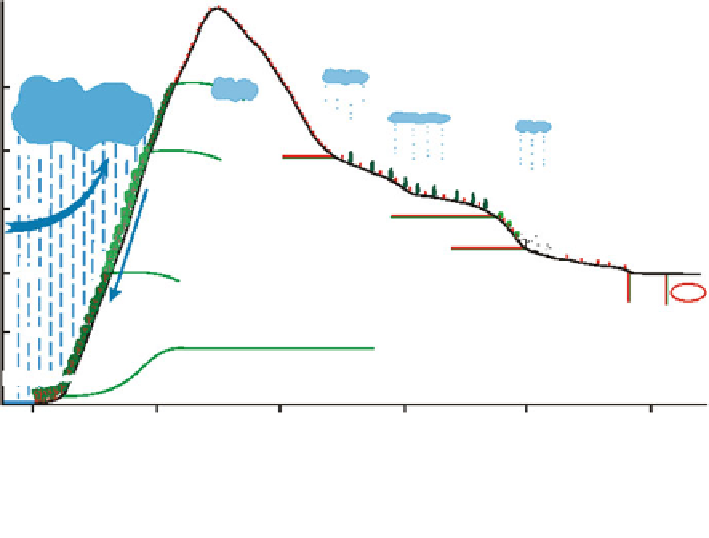Geoscience Reference
In-Depth Information
N
S
1000 - 2000 mm
precip.
m
subalp.
2500
Aragacanthic-
Quercus
Vegetation
macranthera
Fagus
orientalis
Juniperus-
(Paliurus)
237 mm precip.
Tehran
Amygdalus-Pistacia
Artemisia-
Ephedra
100
mm
Artemisia
salt
Calligonum-
Haloseylon
Quercus castaneifolia-
Zelkova - Parrotia - Diospyros
Suaeda-
Salsola
Alnus - Pterocarya
Quercus castan. - Buseus
Caspian Sea
0
50
100
150
200
250 km
Fig. 17.2
Natural vegetation and elevation level on different aspects of Alborz mountain
Table 17.1
Most of the country is arid and hyper arid
Area
Hyper arid
Arid
Semi arid
Dry-sub humid
Total
Worl d
7:5
12.1
17.7
9.9
47.2
Asia
6:5
14.7
16.3
8.3
45.8
Iran
35:5
29.2
20.1
4.9
89.7
Prolonged drought in this area and low available moisture in different parts of
Iran have produced different ecological zones. Iranian habitats support about 8,000
species of flowering plants (belonging to 167 families and 1,200 genera), of which
almost 1,700 are endemic (Eftekhari and Ramezani
2004
).
The plant species growing on four Ecological Zones (Fig.
17.3
) are subjected to
different physiographical and climatic conditions. These four ecological zones are:
•
Hircanian
•
Zagross
•
Iran-O-Touranian
-
Plains
-
Mountain
•
Khalij-O-Ommanian
Each of these four ecological zones supports a suite of plant species which are
adapted to the local conditions.


Search WWH ::

Custom Search